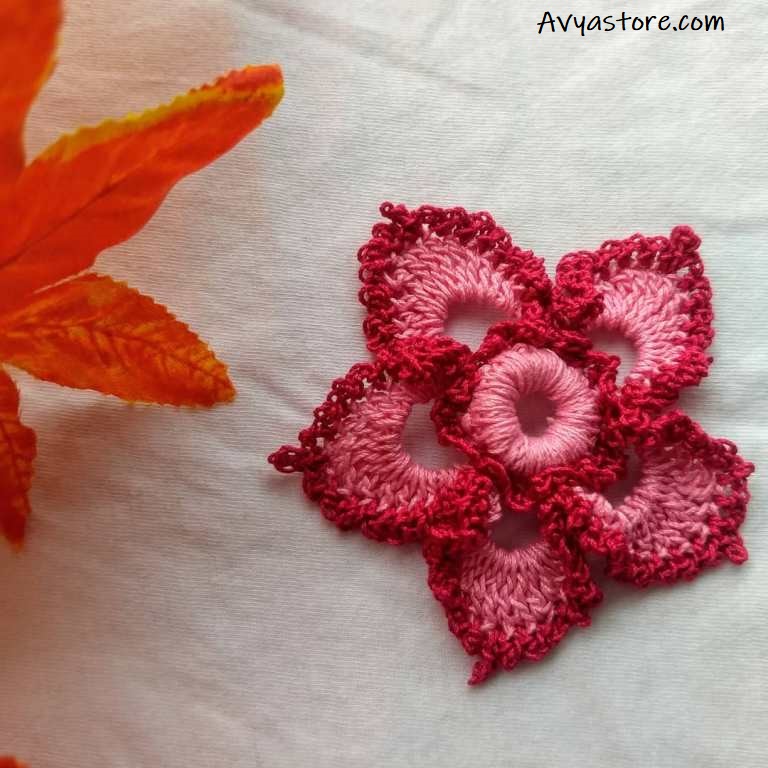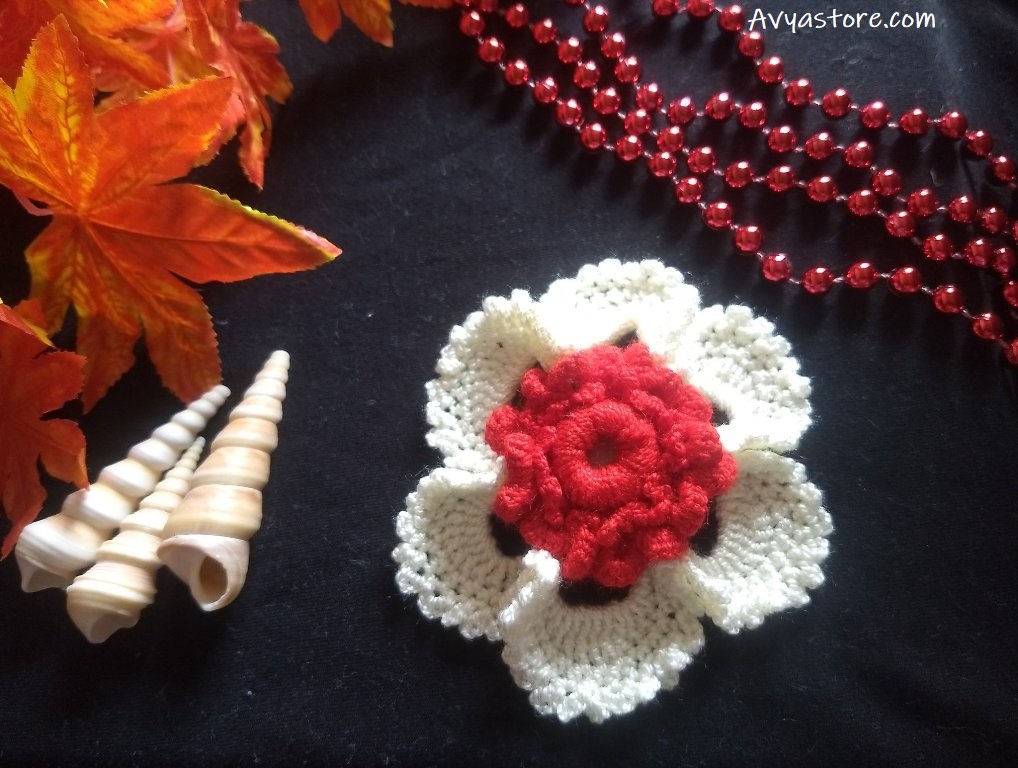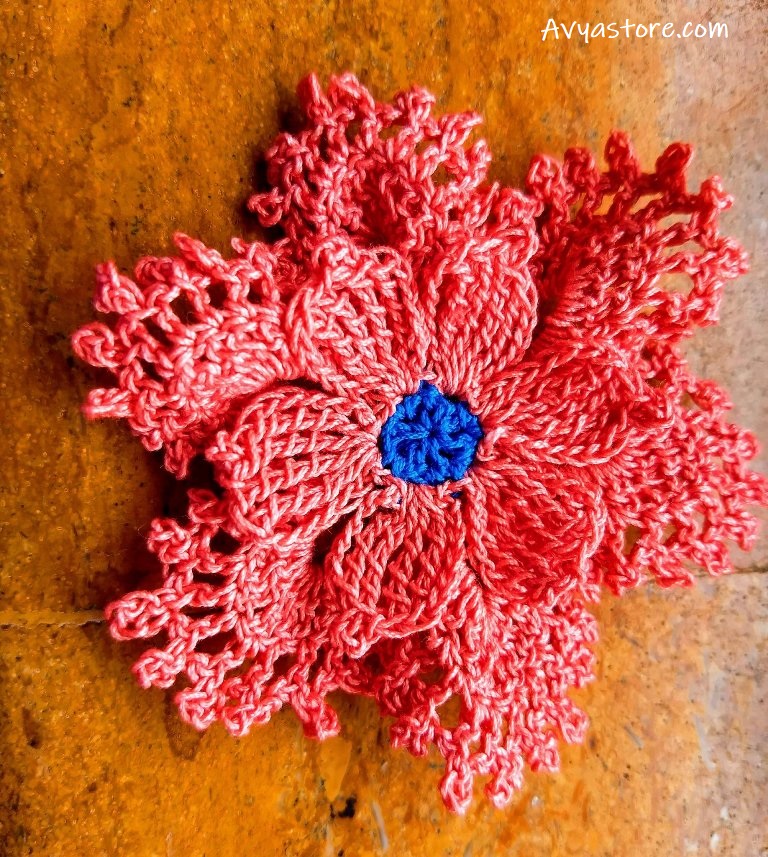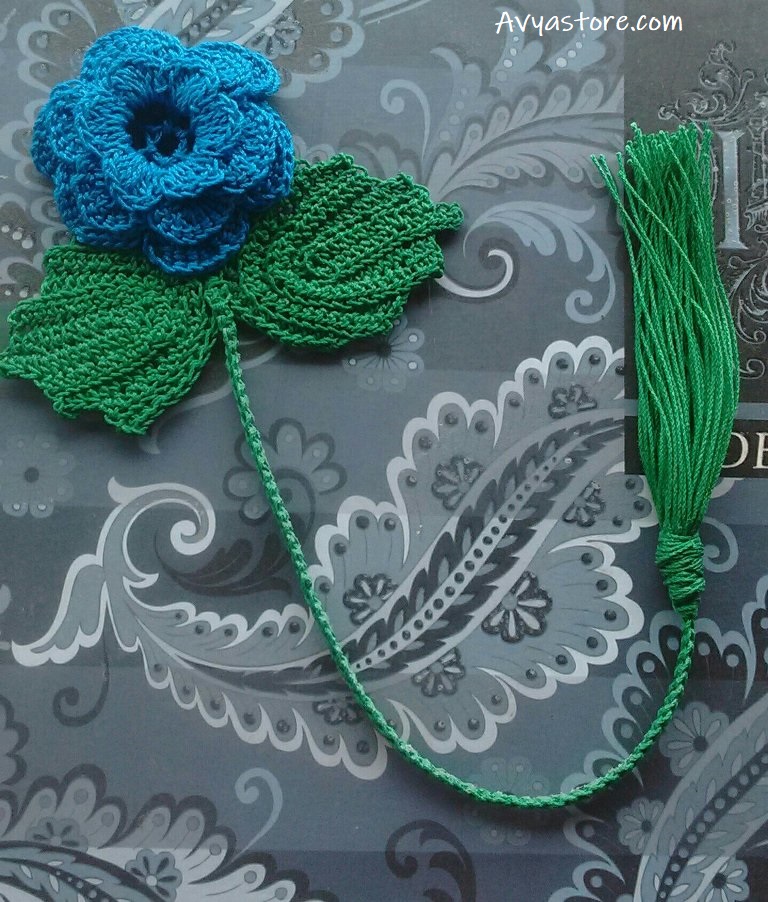
Irish Crochet the best known as lace crochet was popular in the Irish convent communities. Irish crochet requires detailing, patience basically an imitation of lace making. The Irish lace tradition dates back to the 16th century when it was known as Nuns Work.
Irish Crochet Lace History
Irish Crochet first came to Ireland in the 1700s, in the hands of Ursuline nuns who had learned the technique in France, where it had developed as a shortcut for making Venetian point needle lace.
The Irish lace is a lace made of fine-meshed background with raised edges. The style is fun to make, has a unique style, the lace-making is faster than the traditional needle lace.
In 1840 there was vast devastation caused and for living there was huge encouragement given to the development of home crafts; this created small incomes for the destitute families.
The Irish crochet lace evolved into a cottage industry where women would work a particular signature motif in quantity and sell the motifs to the schools or stores where other lace workers would join them together into larger pieces. The Irish crochet motifs had its popularity and value many people used the motifs as currency for trading at the local markets for buying the day to day necessities.
The Crochet lace had huge demand, women soon became the primary wage earners for their households, gathering in large groups making elaborate crocheted lace pieces that supported many families.
The Crochet lace gained popularity in the fashion world when Queen Victoria promoted the lace crochet at an arts exposition in London. The event created a huge demand from professional dealers and Irish crochet gained its position in industries from a home-based resourceful survival skill.
As the demand increase, the Irish girls started writing the Irish lace patterns and many publishers published them. The Irish girls took the initiative to teach the Irish lace techniques to women who needed income.
In the year 1920, there was the introduction of machine-made lace; the lace was cheaper and readily available; this impacted the Irish lace art form nearly became extinct except for a few places of Ireland.

Crafting the Irish Lace
The Irish Lace is made in three distinct styles; one is slightly padded, one is heavily padded, while a third has no padding. The heavily padded lace is considered the most valuable everlasting and is well worth the extra time and trouble spent making it.
Properties of Irish Lace:
- Irish crochet has its own advantage –
- The lace is made in bits and pieces.
- Irish lace can be moulded in new shapes.
- If the lace is worn, it can be replaced.
- The best Irish lace is always firmly and evenly worked, it is fresh and clean when it comes from the designer hands.
- It is difficult for two designers to make motifs exactly alike from the same written directions. A slight variation in hook size or gauge would alter the motif measurement.
- In Irish crochet lace, the gauge plays an important role. The tightening or loosening of the cord or lace might alter the entire sweep of the leaflets.

Material for working
Irish crochet may be executed with any linen or cotton thread, as it is a work that is practically everlasting, good quality materials to be used for better output. Irish Crochet motifs are best made of D.M.C crochet cotton No.70 or 100.
The finest needless of steel crochet hooks are best for working. A few round meshes. some fine sewing needles, a pair of small, sharp scissors, and a piece of pink or blue cambric “foundation.”
Before commencing a piece of work cut a paper pattern of the exact size and shape of the finished article and place this on the back of your cambric foundation and trace around the outer edge with a needle and thread. The stitches on the right side of the cambric should be longer. Then work all the border and baste to the cambric pattern just inside the thread line.
To start the Irish lace make enough number of motifs and sew them strongly in their places. Facedown on the foundation, just as you would sew braid upon a design intended for point lace, making the curves secure and inadequate be pulled out of shape in working the filling. For best results use two or three thicknesses of cambric for the foundation.
Once you finish the Irish lace, separate it from the cambric pattern, secure the loose ends.
Once you complete the Irish lace, it improves its appearance vastly to lay it face downwards upon a very soft ironing bed. Smooth out each motif carefully, lay a wet piece of new linen or lawn upon it and press with a hot iron, while still steaming lift up the cloth and use the iron directly upon the lace giving the work a crispness unattainable look.

Irish Lace Abbreviation
- St = Stitch
- Ch = Chain
- Sl St= slip stitch
- Hdc = Half double crochet
- Dc = Double crochet
- Tr = Treble crochet
- Htr = Half treble crochet
- Dtc = Double treble crochet
- Ltc = Long treble crochet
- P = Picot
- Pl = Picot loop
- R st= roll Stitch
- R to c = Return to centre
- Pc = Padding Cord
In recent time the Irish crochet lace-making is restricted to the hobby and has lost its commercial value. The Irish lace has a separate fan base and will always be the favourite among lace lovers.

Be the first to comment